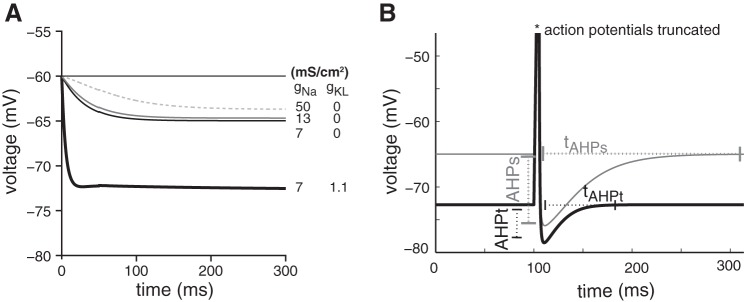Fig. 6.
A: influence of gKL and gNa on resting potential and membrane recovery time. The simulation tracks membrane potential after neuron is released from an initial condition of −60 mV. The simulation was run on 4 model neurons; 3 had gKL fixed at 0 mS/cm2 but contained variable amounts of gNa (dashed, gray, and thin black lines), whereas the fourth contained some gKL (thick line). The membrane potential of all 4 neurons settled to a final value (resting potential) that was more negative than −60 mV. The neuron model that included gKL had a more hyperpolarized resting potential and recovered from membrane depolarization faster than the 3 model versions without gKL. In contrast, increasing gNa alone had a more modest (but opposite) impact: membrane recovery time become a little longer, and resting potential became slightly more depolarized. B: afterhyperpolarization depth (AHP) and duration (tAHP) of spikes evoked by a short 1-ms-long pulse are compared for models that otherwise respond to long-duration steps with transient (black line; gNa = 13 mS/cm2, gKL = 1.1 mS/cm2) and sustained firing patterns (gray line; gNa = 13 mS/cm2, gKL = 0 mS/cm2). The modeled sustained-firing VGN has deeper and longer AHPs than the modeled transient-firing VGN.

